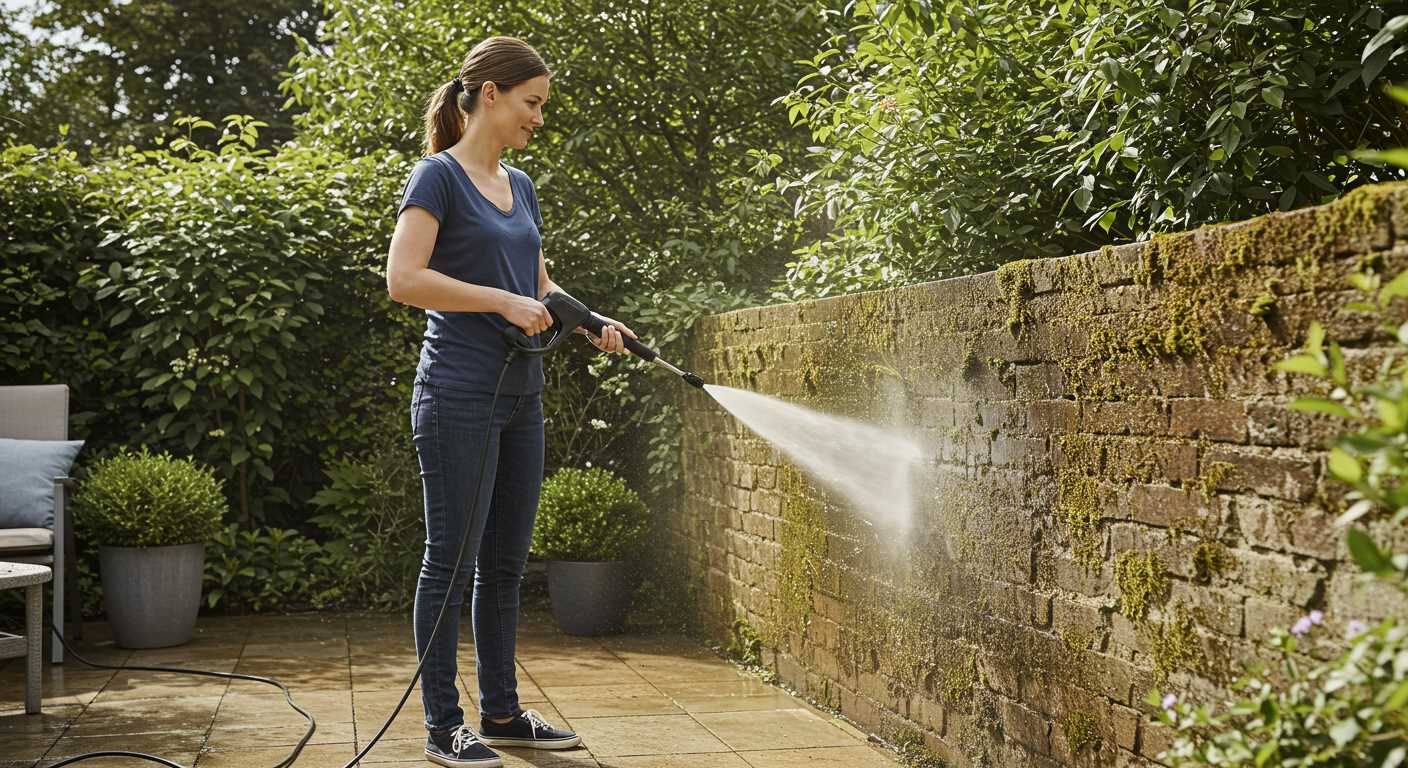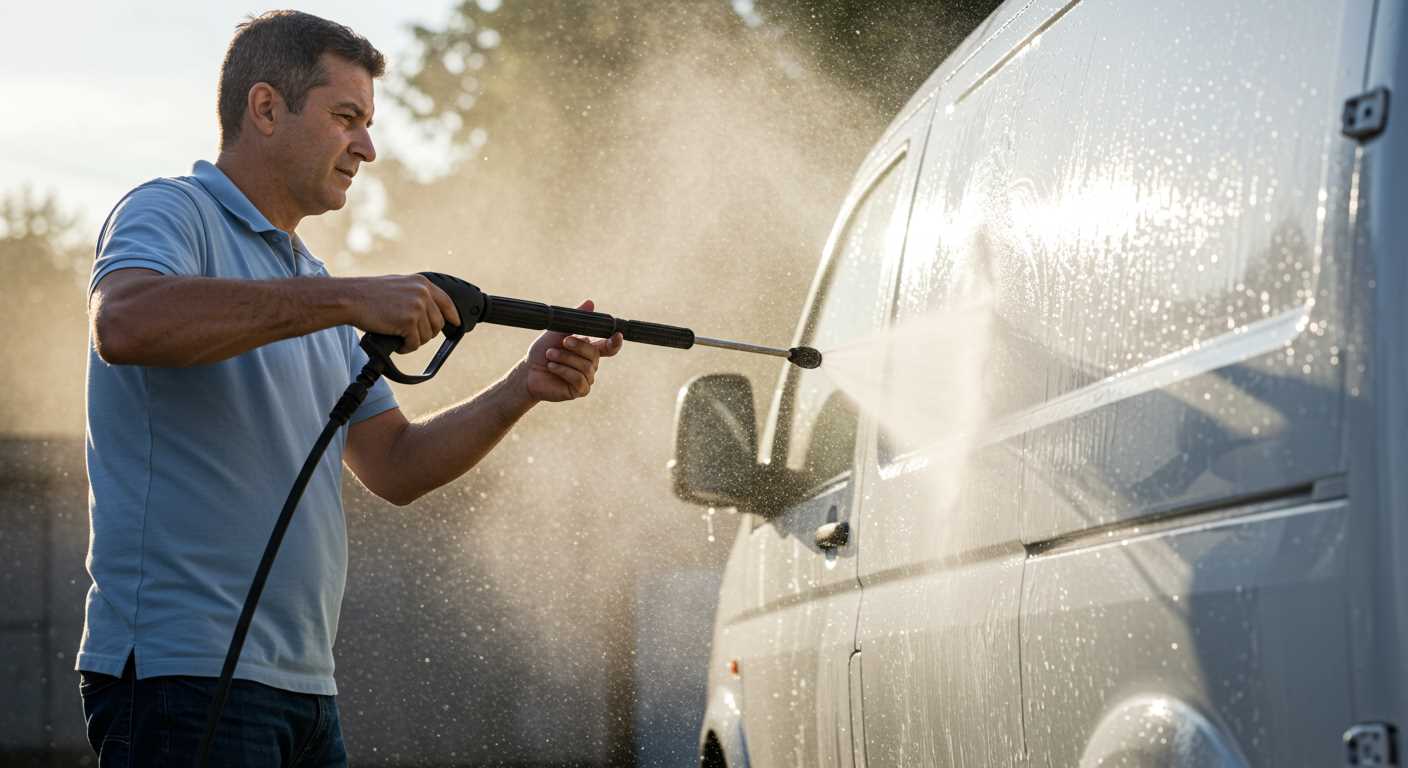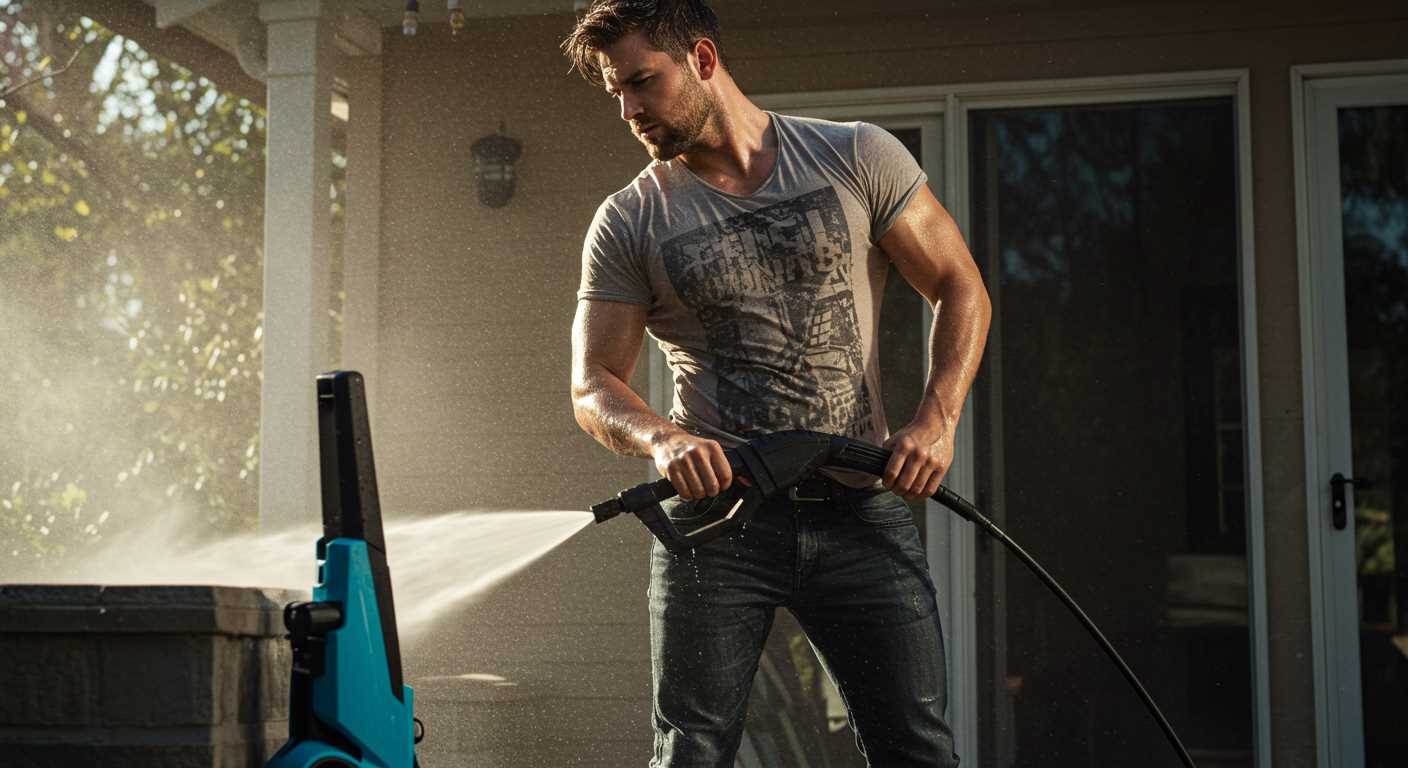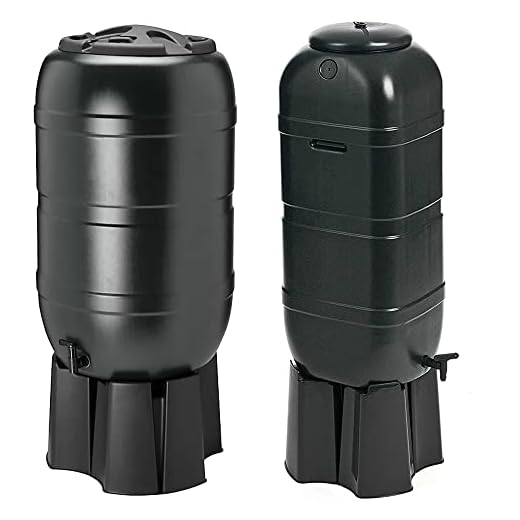



Yes, these devices require a water supply to operate effectively. The water serves as the primary medium that, when forced through a nozzle, creates the high-pressure stream necessary for cleaning various surfaces.
Connecting to a standard garden faucet is the most common method, ensuring a consistent flow of water. Some models may offer alternative water sources, such as rainwater barrels or bulk storage tanks, but compatibility should be verified to avoid damage and maintain optimal functionality.
Before you begin your cleaning tasks, always ensure that the chosen water source meets the manufacturer’s specifications. Insufficient water pressure or flow can lead to subpar cleaning results and may even strain the machine, potentially shortening its lifespan.
In addition, consider using a quality hose that is rated for high-pressure applications, as this will enhance both performance and safety during operation. Keeping these factors in mind will ensure a smoother experience with your cleaning equipment.
Do Pressure Washers Require a Water Source?
Yes, these machines must be supplied with water from a source such as a garden hose or water tank. The functionality hinges on a continuous water flow to effectively generate the high-pressure output for cleaning tasks.
Here are some points to consider:
- Make sure that the water supply is dependable and can maintain a steady flow during operation.
- A standard garden hose is typically sufficient, but ensure it’s rated for the pressure your equipment requires.
- If using a water tank, gravity feed systems often deliver adequate pressure; however, considerations around the tank’s capacity and water level are essential.
It’s crucial to check the manufacturer’s specifications for the correct supply requirements, including minimum flow rates and pressure levels. Failing to comply may result in inferior performance or potential damage to the unit.
Make certain to regularly inspect hoses and connections for leaks. Any interruptions in the water supply can hinder cleaning efficiency and may lead to pump damage over time.
By adhering to these guidelines, you can optimise performance and prolong the lifespan of your cleaning equipment.
Understanding Water Supply Requirements for Pressure Washers
For optimal operation, all cleaning machines require a reliable source of water. The following specifications define the necessary characteristics of the water supply:
Recommended Water Supply Specifications

1. Flow Rate: Ensure the flow rate meets the minimum required level. Generally, a supply providing at least 5-10 litres per minute is advisable to maintain consistent performance.
2. Water Pressure: A minimum pressure of 1-2 bar is recommended for effective functionality. Lower pressure can result in subpar results when attempting to eliminate dirt and grime.
3. Temperature: Use cold to lukewarm water; typically, temperatures under 60°C are safe for most cleaning devices. Hot water may damage internal components, unless specifically designed for such use.
Water Supply Connections
Wherever possible, opt for a direct water supply from a municipal source or a large reservoir. Avoid using hoses that are overly long or contain significant bends, as this impacts flow rate and pressure. Regularly check the supply for blockages, which can impede the unit’s ability to draw water efficiently.
Utilising a suitable connection setup facilitates better performance, prolongs equipment lifespan, and enhances cleaning effectiveness. Make informed choices about the water source to achieve the best results.
| Specification | Recommended Value |
|---|---|
| Flow Rate | 5-10 litres/minute |
| Water Pressure | 1-2 bar minimum |
| Water Temperature | Under 60°C |
Can Pressure Washers Operate with Alternative Water Sources?
Yes, these cleaning devices can operate with alternative water sources. In fact, it’s entirely feasible to use water from sources like rain barrels, lakes, or even large buckets. However, certain conditions must be met to ensure optimal performance and prevent damage.
Water Quality Considerations
The quality of water you use is paramount. Always filter out debris and particulates to prevent clogging the internal components. Using clean, clear water allows the unit to function reliably without unnecessary wear or potential breakdowns.
Water Supply Methods
When using unconventional sources, ensure the water supply is capable of providing adequate pressure. A siphoning method may suffice for smaller jobs, while for substantial tasks, a submersible pump might be necessary to draw water efficiently. Keep in mind, the distance between the source and your equipment can impact water flow, so it’s wise to use shorter hoses if possible.
Impact of Water Pressure on Performance

Optimal water pressure significantly influences how well a cleaning unit functions. Insufficient flow can hinder the effectiveness in removing dirt and grime, whereas excessive pressure might damage delicate surfaces. Here are key insights based on extensive testing:
- Minimum Requirements: Most models operate best with inlet pressures ranging from 20 to 100 psi. Below this threshold, the unit struggles to achieve intended cleaning results.
- High Flow Rate: A minimum flow rate of 3 to 5 gallons per minute (GPM) is recommended for efficient cleaning. If flow is below this, it can lead to inadequate performance.
- Compatibility: Always check manufacturer specifications regarding acceptable water inlet parameters. Using water sources not meeting these criteria can lead to voided warranties or mechanical failures.
- Performance Variations: Adjustments may be necessary depending on the cleaning task. For instance, tougher stains may require higher flow or pressure levels for effective removal.
Testing various units over a decade has shown consistent patterns. Water pressure acts as the lifeline for these devices, directly correlating with their overall functionality. Adjustments to pressure supply can create noticeable differences in user experience.
Monitoring water pressure and flow should form part of regular maintenance. This ensures the unit operates at peak efficiency and longevity, safeguarding the investment in cleaning tools.
How to Set Up a Pressure Washer Without a Direct Tap Connection

Using an auxiliary water source such as a bucket or rain barrel is feasible for operating your cleaning equipment. To do this effectively, follow these steps:
1. Select an Appropriate Container: Choose a sturdy container that can hold enough liquid. A minimum of 50 gallons is advisable for extended jobs.
2. Attach a Suction Hose: Use a suitable inlet hose that fits both the washer’s intake and the chosen container. Ensure the hose length doesn’t exceed 10 feet to maintain sufficient pressure.
3. Create a Seal: If your unit has a filter for the water intake, ensure it is in place to prevent debris from entering the system. A missing filter can lead to clogs and malfunctions.
4. Check for Air Leaks: Before firing up the machine, inspect all connections for leaks or air pockets. Any air ingress can impair performance. Tighten fittings where necessary.
5. Prime the System: To prevent damage, prime the inlet by filling the suction hose with water before starting. This helps in generating proper flow.
6. Monitor Water Levels: Ensure that the container does not run empty during use to avoid straining the motor. Stop periodically to check levels if needed.
Implementing this method is straightforward, ensuring you can carry out your cleaning tasks without a direct connection to a water source. Testing different containers may also yield better results based on your specific needs and usage. This approach offers flexibility and is especially handy in locations where standard supplies are unavailable. By taking necessary precautions, you can keep your equipment functioning efficiently while exploring alternative water options.
Common Misconceptions About Pressure Washers and Water Connections
Many users assume that these cleaners must always draw from a mains supply. This belief limits understanding of alternative water sources that can be used effectively.
One widespread myth is that only high-pressure sources yield satisfactory results. However, as I’ve discovered through years of testing, low-pressure solutions can also work well, provided the unit is designed for it.
Another misconception is that connecting to a standard faucet is the only option for operation. Rainwater collection systems or water stored in tanks can be viable substitutes if the right setups are employed.
Using water from unfiltered sources often raises concerns regarding potential damage. While it’s true that some sediment can affect performance, many units are equipped to handle minor impurities without a hitch.
The size of the supply hose is often overlooked. A common error is using hoses that are too narrow, which can restrict flow and affect the outcome. A wider hose ensures adequate water supply and maintains consistency during use.
Additionally, I’ve encountered users convinced that the pressure setting affects water consumption. In reality, many systems use the same volume regardless of setting, though the intensity varies significantly.
| Myth | Reality |
|---|---|
| Only mains water can be used | Alternative sources like rainwater can be effective |
| High-pressure sources yield better results | Low-pressure sources can also clean effectively |
| Narrow hoses improve flow | Wider hoses ensure better water supply |
| Pressure settings influence water consumption | Most systems maintain the same volume regardless of setting |
These insights highlight the importance of understanding the actual requirements and capabilities of these machines rather than relying solely on common assumptions.
Safety Considerations When Using High-Pressure Cleaners without Direct Water Access
Before using high-pressure equipment without direct water supply, ensure that you have taken adequate safety precautions. Without a stable source, the risk of overheating due to inadequate water flow is heightened, which may lead to equipment malfunction or damage.
Monitor Water Levels
Utilising an alternative water source requires constant monitoring. Keep an eye on the water level in your tank or reservoir. If the flow becomes too low, immediately stop operation to prevent pump damage. Regularly check for any leaks or clogs in your intake system to maintain optimal water flow.
Use the Right Equipment
Selecting a unit that can operate efficiently under these conditions is crucial. Opt for models specifically designed for limited water supply. Utilize a pressure regulator to manage water flow and prevent excessive strain on the machine.
Also, ensure that the hoses and fittings you use are appropriate for high-pressure applications to avoid bursts or leaks that could result in injury.
Always Prioritise Personal Safety
Wear suitable protective gear, such as gloves and goggles, to shield yourself from potential debris and projectiles that may occur during operation. Be aware of your surroundings and avoid any slippery surfaces to reduce the risk of accidents.
Familiarise yourself with the manufacturer’s guidelines regarding usage without direct connections. This will help to understand limitations and operational recommendations thoroughly.
Maintenance Tips for Pressure Washers with Different Water Supply Options
Always inspect the inlet screen for blockages. High sediment levels in alternative sources can clog it quickly, reducing efficiency.
Use a high-quality filter when utilising rainwater or a bucket. This ensures the equipment operates smoothly and extends its lifespan.
For units connected to a static water tank, keep the tank clean and free of debris. Periodic cleaning prevents dirt from entering the system and damaging components.
Lubricate seals and O-rings regularly, especially if using water from non-traditional sources. This helps prevent leaks and maintains pressure consistency.
Monitor the water temperature for any external source. Cold water typically works best; hot water can cause wear on seals and internal parts.
Check the hoses for kinks or blockages. Use clear hoses when possible to visually confirm water flow and maintain optimum performance.
Ensure any connections to alternative sources are secure. Leaks can lead to pressure loss and inefficient operation, affecting the cleaning outcome.
Store the unit and any hoses in a shaded area if exposed to outdoor conditions. Protecting them from UV rays extends their durability against wear and tear.
Finally, consult your device’s manual for specific maintenance recommendations. Each unit may have unique requirements based on its design and water source compatibility.
FAQ:
Do pressure washers need to be connected to a tap?
Yes, most pressure washers require a connection to a tap, as they rely on a direct water supply to operate. The washer uses the water supplied through the hose to create high-pressure jets for cleaning surfaces. Without a reliable water source, the machine cannot function properly.
What happens if a pressure washer isn’t connected to a tap?
Using a pressure washer without being connected to a tap can lead to insufficient water supply. This may cause the pump to run dry, potentially damaging the machine or reducing its performance. It’s essential to ensure that your pressure washer has a steady water source to operate effectively and prolong its lifespan.
Are there any pressure washers that don’t require a tap connection?
Yes, there are some pressure washers designed for portability, such as battery-powered or self-contained units. These may have built-in water tanks that allow them to operate without a direct connection to a tap. However, their water capacity is generally limited, so they may not be suitable for larger jobs.
Can I use a pressure washer with a rainwater collection system?
Yes, you can use a pressure washer with a rainwater collection system as long as the water collected is clean and free from debris. Ensure the collection system is connected properly and provides a consistent water flow to the washer. This is an eco-friendly option for water usage while cleaning.
How do I connect my pressure washer to a tap?
To connect your pressure washer to a tap, follow these steps: First, ensure the power supply is disconnected. Then, attach the water inlet hose to the tap, ensuring a secure fit. Next, connect the other end of the hose to the pressure washer’s water inlet. Once everything is firmly connected, you can turn on the water supply and then the pressure washer, following the manufacturer’s instructions.









